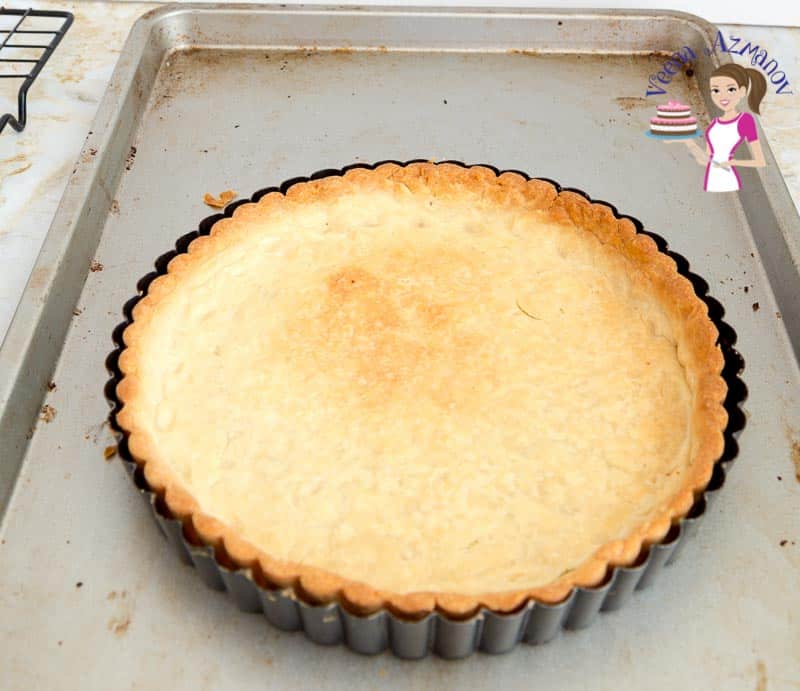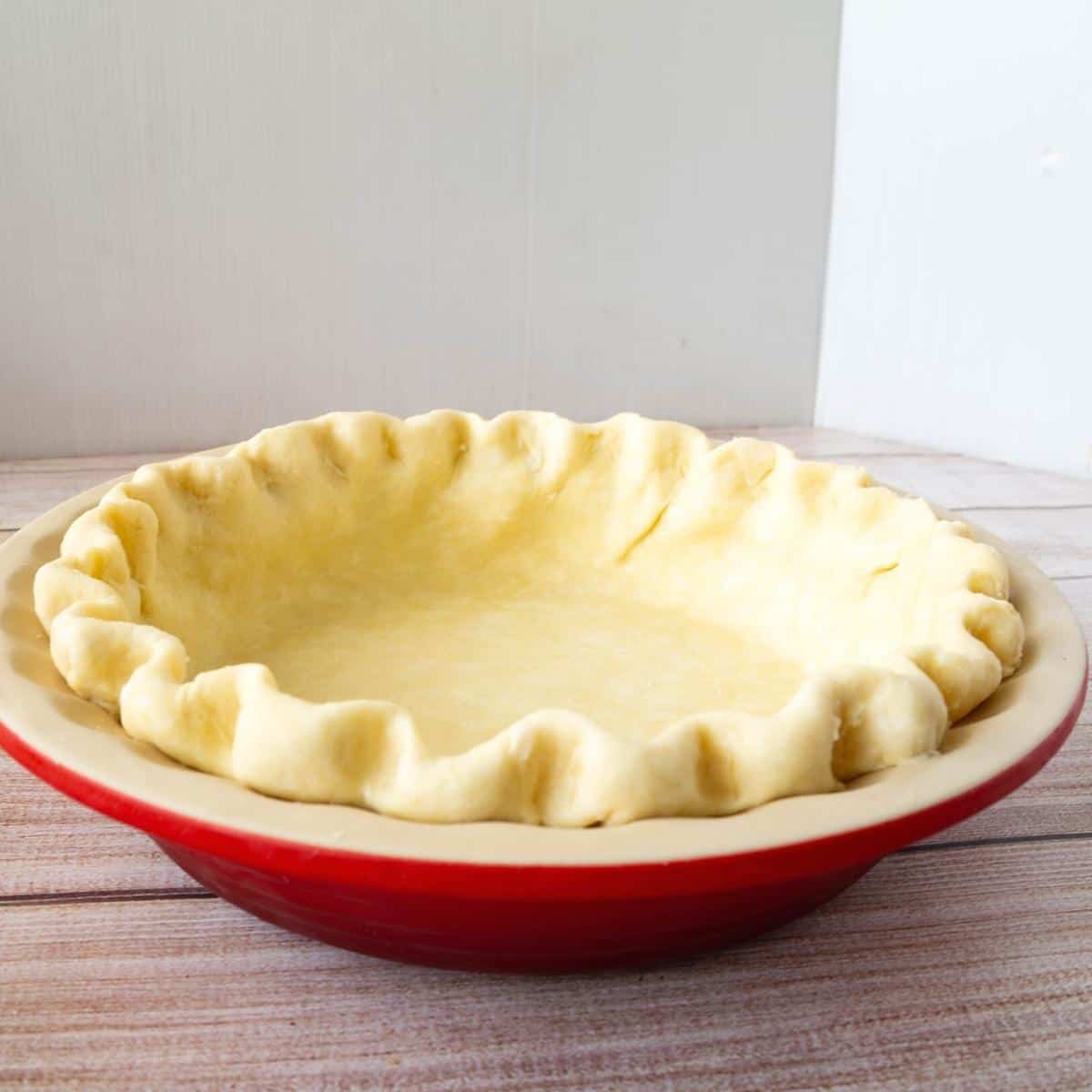A pie crust is a pastry dough that forms the base and sometimes the top of a pie. It is typically made from flour, fat (such as butter or shortening), and water. The main goal is to create a tender, flaky texture that provides structure and complements the filling. The main ingredients of a pie dough are:
Flour: Provides the structure for the crust. Fat (Butter or Shortening): Adds flavor and creates a flaky texture by forming layers within the dough. Water: Helps bind the ingredients together and provides moisture. Salt: Enhances the overall flavor of the crust. Sugar (Optional): Adds a touch of sweetness, especially useful for dessert pies.
Blind baking is a technique where the pie crust is baked partially or fully without the filling. This method ensures that the crust is fully cooked and remains crisp. This is especially important for pies with fillings that are not baked or have a short baking time.
What is the purpose of Blind Baking?
Prevent Sogginess: Ensures the crust stays crisp and does not become soggy from the filling’s moisture. Ensure Crispness: Creates a firm and crisp crust that can hold up against wet or creamy fillings. Maintain Shape: Prevents the crust from puffing up or shrinking during baking, ensuring it retains the shape of the pie dish. Partial or Full Baking: Depending on the recipe, you might blind-bake the crust partially (for pies that will bake again with the filling) or fully (for pies with no-bake fillings).
Step-by-step: How to blind bake a pie crust
Choose the Right Pie Dough
Use a Sturdy Dough: Choose a pie dough recipe that holds up well to baking. Pie crust or shortcrust pastry is a good choice for blind baking. Chill the Dough: After making the dough, chill it in the refrigerator for at least 30 minutes. This helps the gluten relax and prevents shrinking during baking.
Roll Out the Dough
Roll Evenly: Roll the dough out on a lightly floured surface to an even thickness, usually about 1/8 inch. Ensure it is large enough to cover the pie dish with some overhang. Transfer Carefully: Transfer the rolled dough to your pie dish by rolling it around your rolling pin and unrolling it over the dish. Gently press the dough into the dish without stretching it.
Trim and Chill
Trim Excess Dough: Trim the excess dough, leaving about a 1/2 inch overhang. Fold the overhang under itself to create a thicker edge. Crimp the Edges: Use your fingers or a fork to crimp the edges of the pie crust for a decorative finish. Chill Again: Chill the pie crust in the refrigerator for at least 30 minutes or in the freezer for 15 minutes. This step is crucial to prevent the crust from shrinking.
Prick the Base
Dock the Dough: Use a fork to prick the base and sides of the crust. This helps steam escape and prevents the crust from puffing up.
Line with Parchment and Weights
Add Parchment Paper: Line the chilled crust with parchment paper or aluminum foil, ensuring it covers the edges. Use Pie Weights: Fill the lined crust with pie weights, dried beans, or uncooked rice. These weights keep the crust from bubbling up and maintain its shape.
Bake the Crust
Preheat the Oven: Preheat your oven to 375°F (190°C). Bake with Weights: Bake the crust for 15-20 minutes with the weights in place. Remove the Weights: Carefully remove the parchment paper and weights. If the edges are browning too quickly, cover them with foil or a pie shield.
Finish Baking
Bake Until Golden: Return the crust to the oven without the filling and bake for 10-15 minutes or until the base is golden brown and thoroughly baked. Alternatively, add the filling and continue to bake until the filling is cooked or as suggested in your recipe. Cool Completely: Let the crust cool completely before adding your filling for fully baked shells.
Tips for Perfect Blind Baking
Use Fresh, High-Quality Ingredients: Ensure your butter is cold to create a flaky texture. Use ice-cold water to help bind the dough without warming the fat. Chill the Dough: Chill the dough after making it and before rolling it out. This relaxes the gluten and prevents shrinking. Once the dough is in the pie dish, chill it again before baking. This helps the crust maintain its shape. Properly Roll and Transfer the Dough: Roll the dough to an even thickness of about 1/8 inch to ensure uniform baking. Use your rolling pin to transfer the dough to the pie dish without stretching it, which can cause shrinkage. Dock the Dough: Use a fork to prick the base and sides of the dough. This allows steam to escape and prevents the crust from puffing up. Use Parchment Paper and Weight: Line the chilled crust with parchment paper or aluminum foil, ensuring it covers the edges. Fill the lined crust with pie weights, dried beans, or uncooked rice to keep the dough from bubbling. Bake in Two Stages: Pre-bake the crust with weights for about 15-20 minutes at 375°F (190°C). Carefully remove the parchment and weights, then bake for an additional 10-15 minutes until the crust is golden brown. Monitor the Edges: If the edges start to brown too quickly, cover them with foil or a pie shield to prevent burning. Ensure Even Browning: Rotate the pie dish halfway through baking to ensure even browning. Cool Before Filling: Let the crust cool completely before adding the filling to prevent it from becoming soggy. Extra Tips for Perfection: For extra crispness, brush the baked crust with a beaten egg white and bake for another 2 minutes. This creates a moisture barrier. Use Pie Weights for Even Baking: Make sure the weights are evenly distributed to avoid uneven baking. Prevent Over-Browning: If the edges of the pie brown too fast during the second bake, cover them with pie shields or foil. Adjust Baking Time: Different ovens can vary, so keep an eye on the crust and adjust the baking time to achieve a perfect golden brown.
Types that can be used for blind baking
Pie Crust Pastry: This classic pie crust is made from flour, fat (butter or shortening), and water. It’s known for its flaky and tender texture, perfect for both sweet and savory pies. Sweet Shortcrust Pastry/Pâte Sucrée: This crust is similar to shortcrust pastry but includes sugar, making it sweet. It’s commonly used for tarts and dessert pies, providing a firm yet tender base that complements sweet fillings. Rich Shortcrust Pastry/Pâte Sablée: This rich, crumbly crust contains more butter and sometimes egg yolks, giving it a sandy texture. It’s often used for delicate tart bases and pairs well with creamy or fruit fillings. Graham Cracker Crust/Crushed Graham Crackers: This crust is made by mixing crushed graham crackers with melted butter and sugar. It is commonly used for cheesecakes and no-bake pies, offering a sweet and crunchy texture.
Frequently asked questions
Did you LIKE this recipe? Save it for later. You can find my recipes on Pinterest. Follow me on Facebook, Twitter, and Instagram.Subscribe, and I’ll send you new recipes right to your inbox.
Thank you for sharing - Save for later













